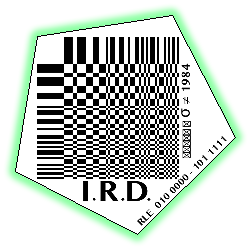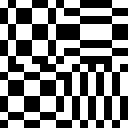Before mechanisms such as filtering, censorship and algorithmic bias dictate what images are rendered, disseminated, and ultimately seen (or left unseen), the image first needs to be captured.
What is captured depends on the scope of the technology, defined by factors such as frequency range, modality, or data type, which set a baseline for what is resolved.
Through tactical interventions, scope can be expanded to support alternative ecologies of visibility.
////////////////////////////
What is captured depends on the scope of the technology, defined by factors such as frequency range, modality, or data type, which set a baseline for what is resolved.
Through tactical interventions, scope can be expanded to support alternative ecologies of visibility.
////////////////////////////
Whiteout was created after joining the Armada de Chile on a research trip to Antarctica organised by Nicolas Spencer for Polar
it was also inspired by Axis research done with Mario de Vega and my time at ARTS COLLIDE Barcelona CERN
it was also inspired by Axis research done with Mario de Vega and my time at ARTS COLLIDE Barcelona CERN

Whiteout (2020)
SCOPE: EXPANDING SELECTIVE CAPTURE
After the shocking revelations of “white shadows” — the racist bias hard-wired into calibration systems that rely solely on Caucasian test cards — the Angel embarks on a quest for true colour reference.
She begins by building a Rainbow Generator, to Refract a Spectrum of Lost and Un/Named Colours. However, when finally deployed, the Generator fails to produce nature’s original glitch: the continuous gradient of the rainbow.
Instead, it renders a banded, unnatural almost cartoon-like collection of color bands.
After countless hours of discouraging research into the cause of this truncation, she finally identifies the problem: the light source in the Generator was following an optimization paradigm. As energy-efficient systems narrowed standard light emission to a specific collection of discrete wavelengths, they rendered full-spectrum lamps obsolete.
While to the eye, the light in the Rainbow Generator may appear to be full-spectrum white light, in reality, it is a simulation. The light only emits a narrow band of frequencies required to stimulate the three types of photoreceptor cones in the eye, responsible for detecting short, medium and long wavelengths, a selective emission technology that efficiently supports the perception of white and colored light while actually bypassing large bands of the actual spectrum.
Ironically, the Generator proves to be a tool that illuminates forgotten frequencies, revealing the interplay between perceptual limits and the invisible quantisation of technology.
The Angel, now painfully aware that even the latest technology (from hardware to software and filters) may be rooted in fundamentally imperfect protocols, seeks a way to regain insight and control over the frequencies around her.
In an act of desperation, she considers modifying her body to overcome her perceptual limitations.
She wonders whether all she needs is a different type of eye: a sensor that is larger, slower, or more sensitive to other frequencies of light. When she finally mounts an antenna in one of her eye sockets, she gains access to an expanded visual ecology.
But the modification quickly leads her into a Whiteout: lacking the tools to decode her new visual input, she is oversaturated with noise and devoid of resolution.
She begins by building a Rainbow Generator, to Refract a Spectrum of Lost and Un/Named Colours. However, when finally deployed, the Generator fails to produce nature’s original glitch: the continuous gradient of the rainbow.
Instead, it renders a banded, unnatural almost cartoon-like collection of color bands.
After countless hours of discouraging research into the cause of this truncation, she finally identifies the problem: the light source in the Generator was following an optimization paradigm. As energy-efficient systems narrowed standard light emission to a specific collection of discrete wavelengths, they rendered full-spectrum lamps obsolete.
While to the eye, the light in the Rainbow Generator may appear to be full-spectrum white light, in reality, it is a simulation. The light only emits a narrow band of frequencies required to stimulate the three types of photoreceptor cones in the eye, responsible for detecting short, medium and long wavelengths, a selective emission technology that efficiently supports the perception of white and colored light while actually bypassing large bands of the actual spectrum.
Ironically, the Generator proves to be a tool that illuminates forgotten frequencies, revealing the interplay between perceptual limits and the invisible quantisation of technology.
The Angel, now painfully aware that even the latest technology (from hardware to software and filters) may be rooted in fundamentally imperfect protocols, seeks a way to regain insight and control over the frequencies around her.
In an act of desperation, she considers modifying her body to overcome her perceptual limitations.
She wonders whether all she needs is a different type of eye: a sensor that is larger, slower, or more sensitive to other frequencies of light. When she finally mounts an antenna in one of her eye sockets, she gains access to an expanded visual ecology.
But the modification quickly leads her into a Whiteout: lacking the tools to decode her new visual input, she is oversaturated with noise and devoid of resolution.
Spectrum of Lost and Unnamed Colours (2024: Sound: Debit)
 Rainbow Generator (2024).
Rainbow Generator (2024). W/ Support of Herman Hermsen and So Kanno.
////////////////////////////
A Spectrum of Lost and Unnamed Colours
was commissioned and produced in the framework of EPFL - CDH Artist in Residence Program 2023, Enter the Hyper-Scientific
Partners: EPFL Center for Imaging, Edward Andò, CLIMACT Center for Climate Impact and Action UNIL & EPFL
Credits: Rosa Menkman
Support: Lotte Menkman
Curator & head of program: Giulia Bini
